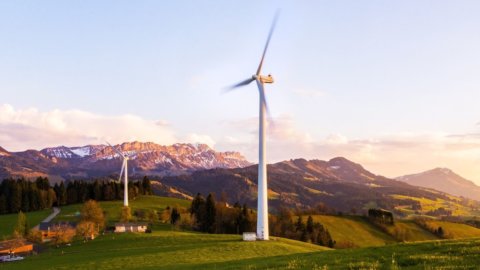What horizon for the future of energy? According to the data of Bloomberg's New Energy Outlook 2018 presented in Rome, after the United Kingdom, Spain and the United States, at the Enel headquarters in Viale Regina Margherita, the prospects for the energy sector are very positive. This report does not take into account the minimum measures required by the Paris Agreement on climate, but rather explains the road and the goals that individual countries can take and achieve.
According to the 2018 New Energy Outlook (NEO) disclosed by Bloomberg New Energy Finance (BNEF), by 2050, renewable sources will supply 87% of electricity in Europe, 55% in the United States, 62% in China and 75% in India. Coal's share of global electricity generation will decline, solar and wind power will be able to provide about 50% of the world's electricity needs, while Only 29% of global electricity generation will come from fossil fuels, up from 63% currently. The domination of fossil fuels is coming to an end and a demand of +54% for energy from renewable sources is expected by 2050.
“We will see an increasing use of electricity in our societies, while dependence on gas and oil will decrease. Today the energy transition is faster and more disruptive than the previous ones and affects all and all sectors ". said Francesco Starace, CEO and Global Manager of Enel, in his greeting address, emphasizing that we will increasingly move "towards cleaner, more competitive, digitised, precise and efficient energy".
The Bloomberg report foresees global investments of 11,5 trillion dollars in new energy production between 2018 and 2050, and of these 8,4 trillion are destined for wind and solar, while another 1,5 for new zero carbon technologies such as hydro and nuclear power.
By 2040, transportation will become an increasingly important part of the electric sector: 55% of all new car sales will be electric.
The big loser in the energy game is coal: it will be reduced to just 11% of world electricity production by 2050, compared to the current 38%, as confirmed by the analyst Elena Giannakopoulou "Coal emerges as the most big loser in the long run cost-beaten by wind and PV in electricity generation, and by batteries and gas in flexibility services.
Andreas Gadolfo, Bloomberg's European Power & Carbon Associate, was more cautious in presenting the results of renewables in Europe, stating that they will continue to be the best globally and that emissions will reduce very quickly by 2030, while over the years to come they will undergo a slight flattening. The same result applies to Italy which, thanks to its physical characteristics, alone has high possibilities of reducing CO2 emissions and producing electricity through the use of solar and wind power. At the antipodes is Germany, where thermoelectric generation is difficult to abandon. However, if the goal is to reduce emissions by 100%, explains Gadolfo, it is still necessary to wait and look beyond 2050 since there is still a lack of investments in technological innovation that can allow a complete elimination of emissions.





